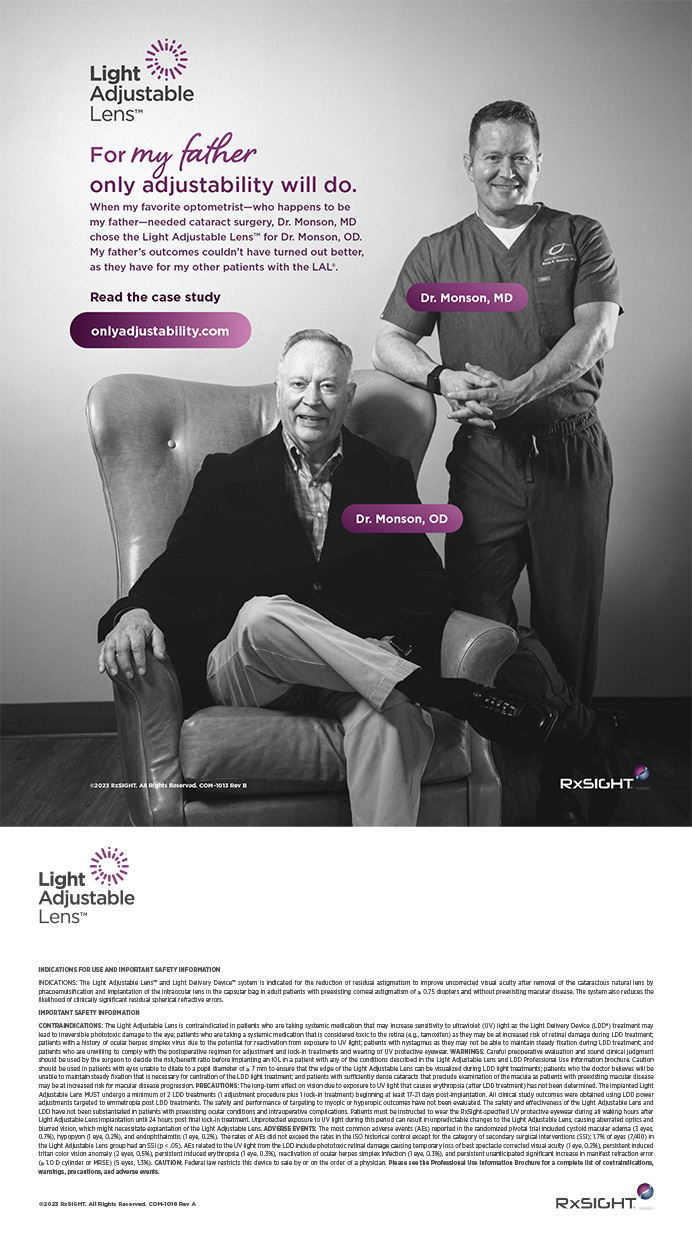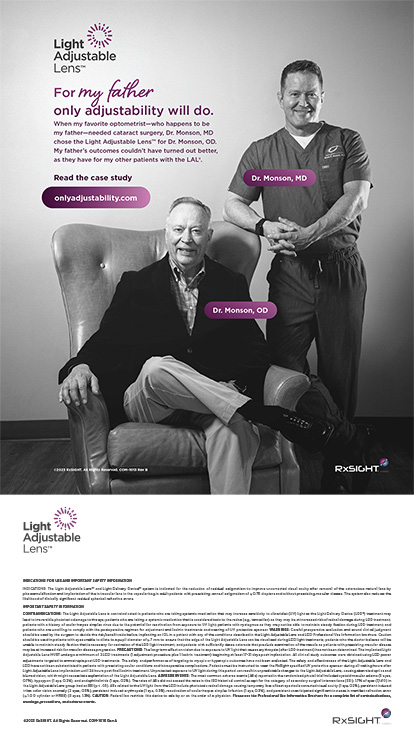When confronted with complex cataract cases, the surgeon must have high confidence in his or her phaco machine and must know how to use it well to be successful. In such cases, precise vacuum/aspiration control can aid the surgeon. I use the Stellaris Vision Enhancement System (Bausch + Lomb) with Digiflow and dual linear vacuum control. These features allow me to be successful in the most challenging of cases.
For example, in patients with intraoperative floppy iris syndrome, precise vacuum control reduces the risk of drawing the iris into the phaco needle. During aspiration, as each piece of lens occludes and then clears the phaco tip, everything behind it is at risk of being incarcerated in the phaco tip. When occlusion breaks, the rotary vane vacuum system in the Stellaris recognizes the change and controls the system’s vent, immediately reducing the vacuum level. With other peristaltic-based aspiration systems, I have noticed a slower response when occlusion breaks. These anterior chamber dynamics are also a concern in patients whose chambers are inherently unstable, such as those who have had previous vitrectomies, or chambers that are unusually deep, as is the case in high myopes. Precise and responsive vacuum control is critical, because these chambers can collapse very quickly as occlusion breaks.
The dual linear foot pedal adds another level of surgeon control that is particularly useful in dense cataracts. With the system’s foot pedal, there are two vacuum controls: one in the linear foot position 2 and the other engaged by moving the foot pedal to the right in the “yaw” position. During the removal of dense cataracts, robust vacuum is helpful in moving and impaling pieces of nucleus. The foot pedal yaw mode provides an instantaneous boost of vacuum to remove dense pieces of nucleus with short pulses of phaco energy. Having extra vacuum on demand can significantly reduce my need to use ultrasound power to remove dense particles. Vacuum aspiration is also essential for challenging cortical cleanup, which can be an issue in laser-treated eyes.
Of course, the added benefit of relying more on vacuum than on ultrasound power in dense cataract cases is the reduction of corneal edema the next day. Although dispersive viscoelastics (Viscoat [Alcon] or Endocoat [Abbott Medical Optics]) provide some protection, ultrasonic energy can damage endothelial cells. Particularly in eyes with compromised corneal endothelium, as in Fuchs dystrophy, low phaco energy during cataract surgery can make the difference between a clear cornea and permanent haze. The system provides excellent cutting efficiency with a handpiece that delivers a lower frequency (28.5 kHz) yet a higher stroke length than other machines. Coupling the system’s responsive high vacuum settings with pulsed phacoemulsification minimizes the energy introduced into the eye, while not compromising the stability of the chamber or cutting efficiency.
Whether a case is complex or routine, the capabilities of the Stellaris system with high vacuum settings, and the precise control they allow, make it suitable for coaxial and biaxial surgery. I perform a high volume of microincisional cataract surgery with this platform. The fact that it supports combined cataract and vitreoretinal procedures is a further advantage.
Robert J. Weinstock, MD, is a cataract and refractive surgeon in practice at The Eye Institute of West Florida in Largo, Florida. He is a consultant to Bausch + Lomb. Dr. Weinstock may be reached at (727) 585-6644; rjweinstock@yahoo.com.


